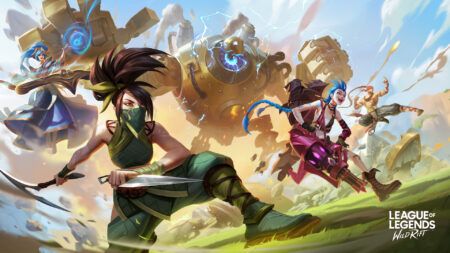Getting into any multiplayer online battle arena (MOBA) is a daunting experience. You not only have to figure out how to dexterously execute a myriad of mechanics, you also need to learn about every single character and item in the game — or risk not knowing how to play against them, or how to buy the right items.
So even though League of Legends: Wild Rift is the mobile version of League of Legends, it still requires a certain level of knowledge and skill for you to be competent enough to enjoy the game. This beginner’s guide will give you the tools to get there.
Wild Rift is a MOBA
If you decided to pick Wild Rift up as your first (mobile) game, or if you’re an avid fan of other genres and this is your first dive into MOBA, it’s important to understand what you’re getting into.
A multiplayer online battle arena typically consists of five players going up against another five on the same field. The map in Wild Rift is called Wild Rift (shocker!), and is divided in half diagonally by a river.
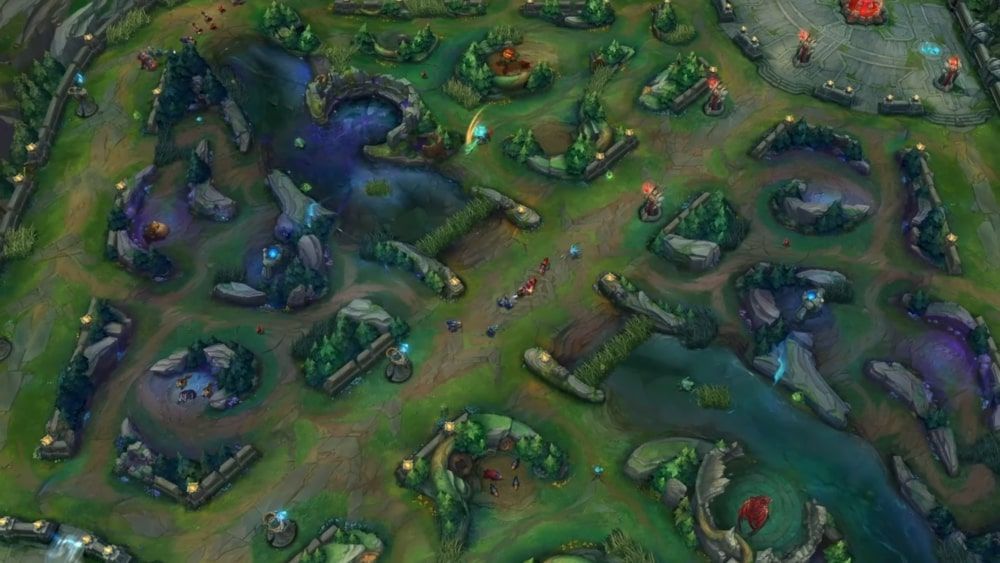
The map is mirrored, meaning that the terrain on the top half of the map is a reflection of the bottom with two key exceptions — Dragon and Baron, which you’ll find out more about later.
Each team begins the game in their base, located on opposite sides of the map distinguished by the colors red and blue. You will always see yourself and your team outlined in blue with green HP bars, and enemy units highlighted in red with red HP bars.
Your goal as a team is to destroy the enemy’s Nexus, which is protected by a series of turrets spread out across three lanes. The three lanes are shown on the map — top or Baron lane (solo), middle (solo), and the Dragon lane (duo). There is also a jungler, who instead of laning, roams in the jungle to get the team ahead.
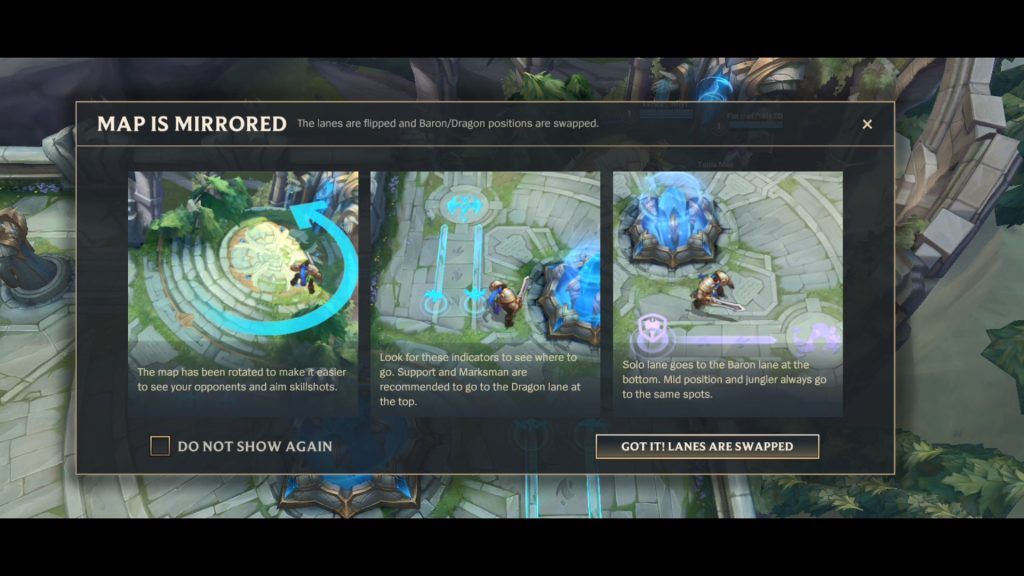
Each player moves towards the same goal by gaining experience (XP) to level up, and earning gold. They gain both XP and money by killing lane minions, jungle creeps, enemy champions, enemy turrets, and objectives like Dragon, Rift Herald, and Baron. By having more XP, you level up with better stats. With gold, you can buy more powerful items to make your champion stronger.
When the game starts, the top half is controlled by the enemy team, while the bottom half is controlled by your team. As turrets fall and minions wave push in, each team takes steps to inch closer to the other’s Nexus.
What makes MOBAs a unique genre is that all players enter the same arena in control of their own uniquely selected character. In Wild Rift, these are called champions.
Understanding the Wild Rift map
In between your base and the enemy’s base are three lanes and the jungle. The mid lane runs through the central section of the map, while the Baron lane and Dragon lane extend out, curving around the edges.
Fog of War and Vision
Following League of Legends, the Fog of War in Wild Rift adds more complexity to the strategy game. Look at the mini map at the top left corner of your screen. See all the blackened areas? They are covered in Fog of War, meaning that your team doesn’t have perfect vision of the entire map.
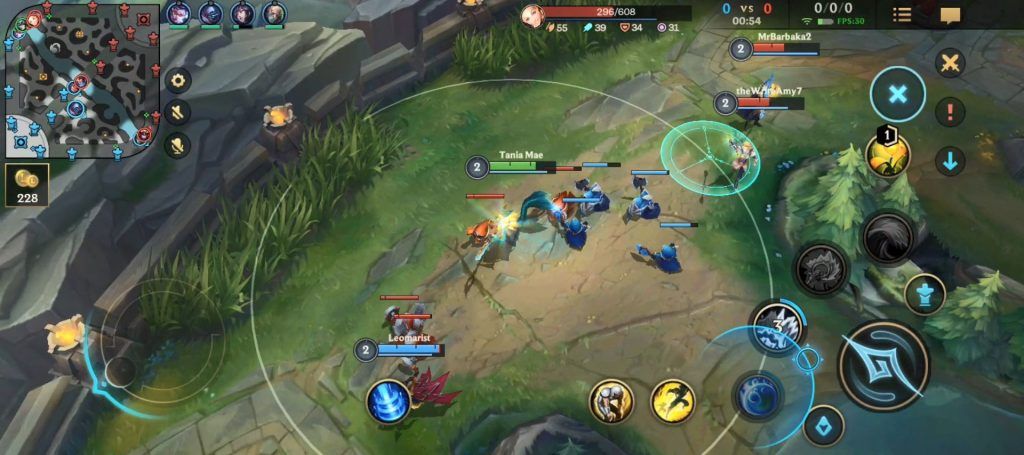
If perfect vision exists, then everyone will know exactly where everyone is, which cuts out all the fun. That’s why wards exist in the form of yellow trinkets. Once placed down on the map, they give you limited vision of a small area around them. You can also remove enemy wards by changing it to a red sweeper.
You only have perfect vision of your own base at all times. At other times, minion waves, your teammates’ champions, trinket wards, if enemy units come into tower range, or if your team secures the Scuttle Crab in the river, will there be additional temporary vision. So if an enemy champion is near your teammate, or they move into an area where you have it warded, they will be spotted, which gives your team an information advantage.
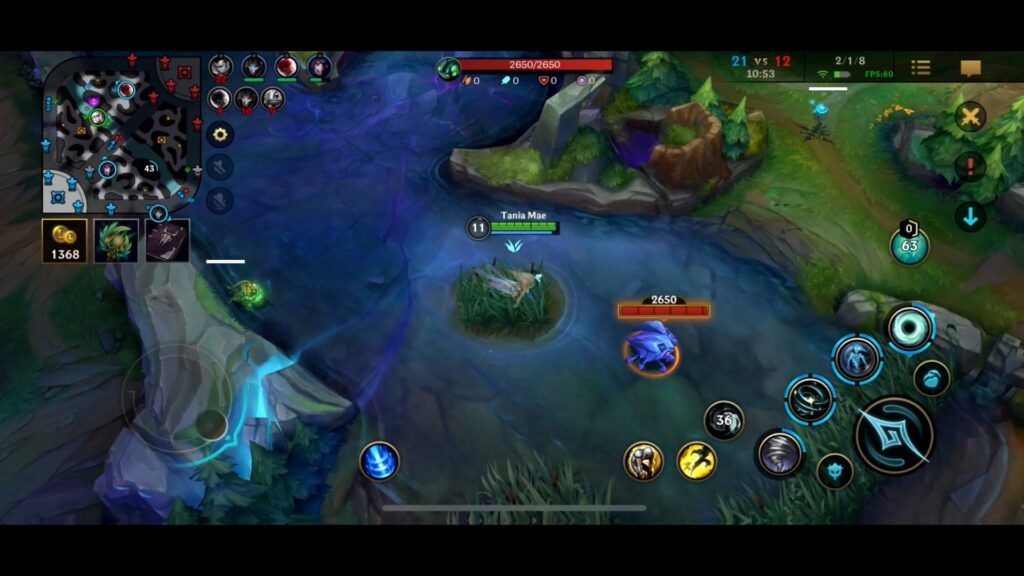
The jungler in particular, is the one who dwells most in the Fog of War since they do not interact with minion waves, but rather, jungle creeps. This also increases their success rate of showing up in the lane unexpectedly for a kill since the enemy team may not always know where they are.
Fountain and Base
The area where everyone spawns is called the Fountain. Here, you can buy items which will make your champion stronger, as well as heal up your Health Points (HP) and Mana Points (MP). If you die in-game, you’ll also respawn at the Fountain.
Just outside the Fountain, you’ll see your Nexus, the large blue crystal that sits in the middle of your base. Your aim is to protect this whilst strategizing to destroy the enemy’s red Nexus on the opposite end. At the edge of the base are three turrets that protect it.
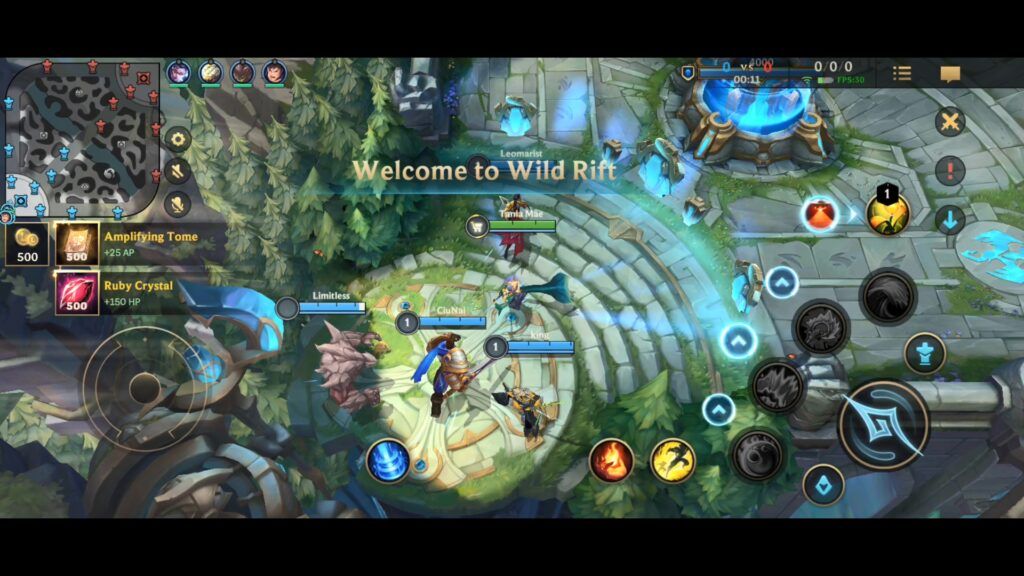
When the game starts, minion waves spawn from the Nexus as they spread out in all three lanes. Jungle creeps will also spawn at camp locations for the jungler to tackle. This happens in parallel with the enemy’s side of the map at fixed timings.
As a result, the minion waves in lane will clash right in the middle. Upon contact, opposing minion units will automatically start attacking each other. After 12 seconds of preparation, the first wave is released. A new wave emerges every 25 seconds.
Minions
There are three types of minions: Melee, caster, and cannon minions.
Melee minions are short ranged, caster minions are ranged, while cannon minions are those that sit in fortified tanks. Cannon minions only spawn once every three waves. They deal extra damage, and when killed by a champion, and grants more gold than melee and caster minions.

After 12:15, the waves will alternate between a wave having one cannon, or two cannon minions and no ranged minions. These waves and their composite directly affects the pace of the game, so expect things to speed up from 12 minutes onwards. If a champion continually attacks minions and kills them faster than the enemy’s, they achieve a favorable push of the wave.
On top of that, once a base turret is destroyed, super minions — the biggest, more empowered minion will spawn, adding attack power and pressure on the enemy base, giving the team that downed the structure more opportunities to close things out.
Jungle
The jungle is occupied by the player who opted to play the jungler, who runs Smite as their Summoner Spell.
Smite does a fixed amount of true damage to jungle camps, and helps junglers down these jungle monsters faster. These camps are littered throughout the map on each side of the river. When junglers clear a camp, they receive experience points and gold.
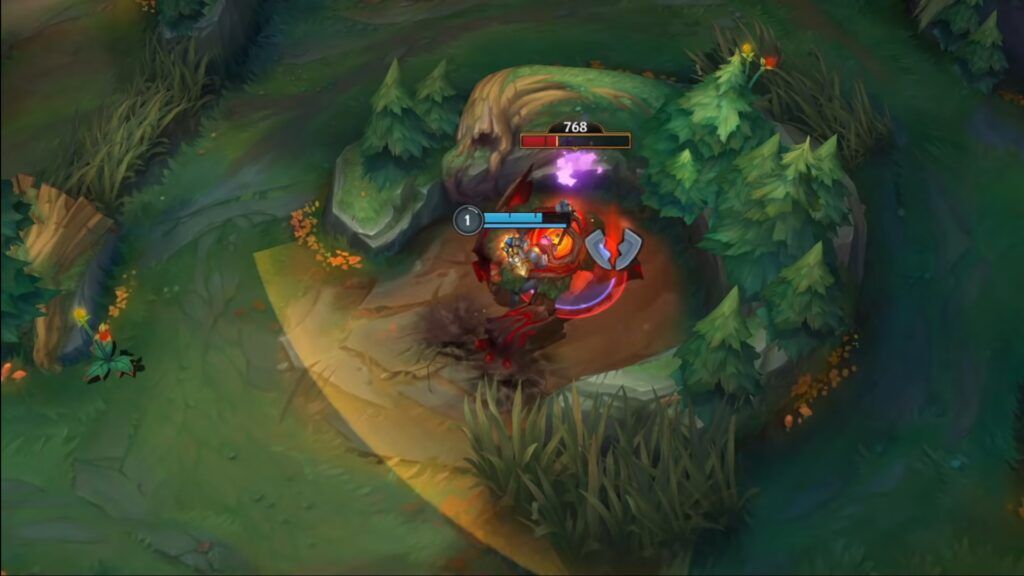
Since the camps are placed in different locations, the jungler is the main person who influences the lanes. They can appear in a lane to create a two versus one situation, pressurizing the enemy laner or killing them off entirely. This mechanic is called “ganking”, which is one of the two main functions of a jungler.
As their job is to control the jungle, sometimes even invading the enemy’s, junglers are also tasked with securing objectives, namely Herald, Dragon, and Baron. Since they run Smite, they are able to deal unfiltered burst damage to an objective to secure it for the team.
Turrets
All champions play a unique role in the game, so you’ll need to move your character to the lane where you function best. On the way, you’ll pass your own turrets, which deal damage to enemy units that come within its range.
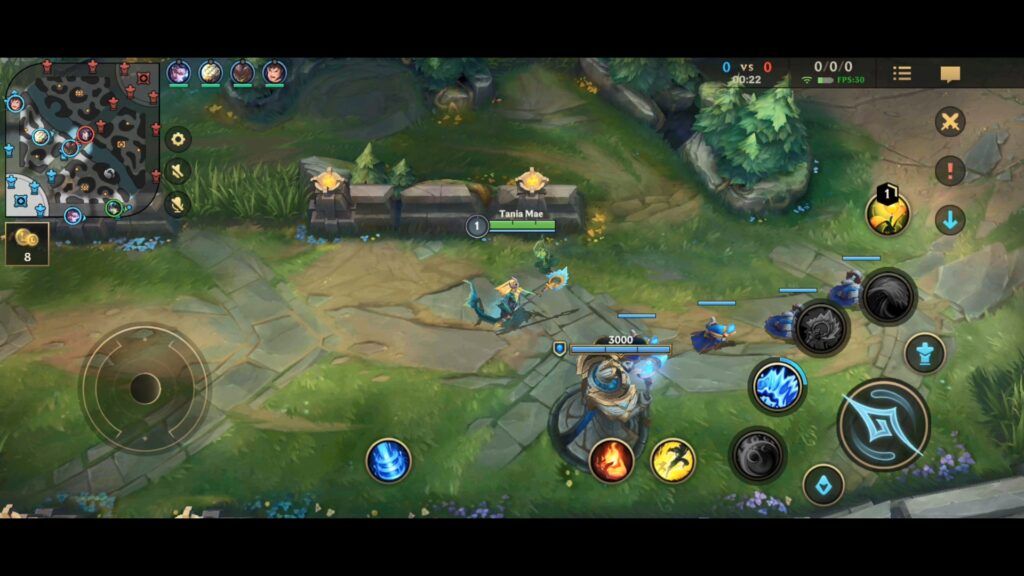
There is a line of turrets at the edge of your base, and two outer turrets in the lane, all of which are mirrored on the enemy’s side of the map. The one furthest away is called the first outer turret, followed by second outer turret, and then base turret.
Turrets have a fixed 3,000 HP. Hitting them will give you extra gold and reduce their HP. You can eventually wear one down to zero, which destroys it permanently and cannot be revived again.
- The ultimate guide to Wild Rift for League of Legends players
- The best Wild Rift champion combos for duo queuing with your crush
Key Wild Rift objectives
Turrets
Downing turrets puts you one step closer towards the enemy base. It opens up the map for your team, giving you more control of an area. This is done by pushing in minion waves, walking into the enemy jungle, and warding it.
Setting up your waves properly and working with your teammates allows you to down turrets more efficiently as the combined damage of a few champions speed up the process. Your bot laner, or AD carry in particular, is most equipped to do so since they are the champions with the longest range and highest physical damage.
Dragon
There are four types of Elemental Dragons in the game: Ocean, Infernal, Mountain, and Cloud. The team that downs any of the dragons will receive a permanent buff to every single member, dead or alive, according to the element. The first dragon will spawn at the four-minute mark.
Ocean drakes grants lifesteal, Cloud drake gives additional movement speed, Mountain increases your defense, while Infernal increases your offensive power. The dragons all spawn in the dragon pit, located nearest to the duo lane, hence it is called Dragon lane.
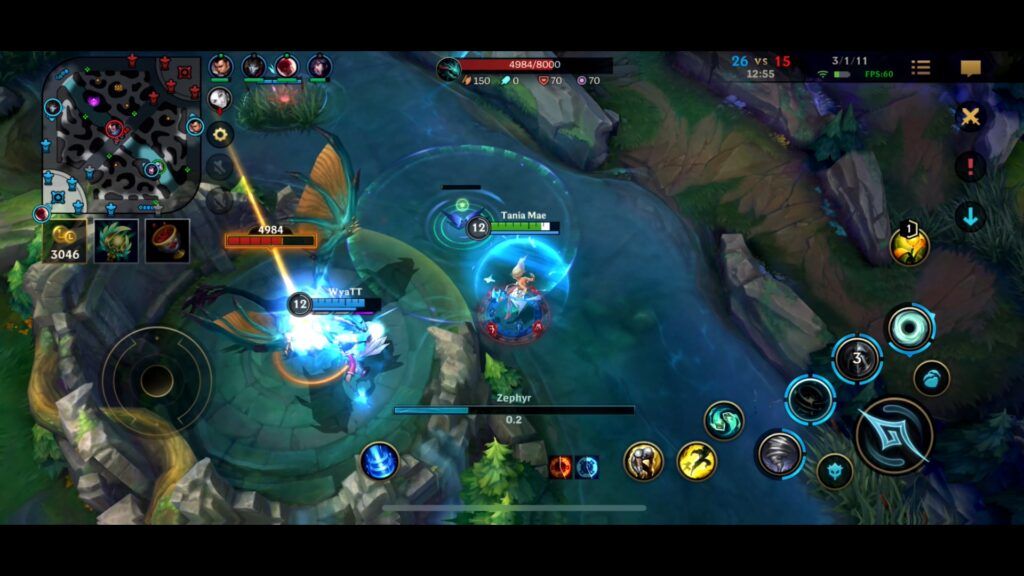
Only three types of elements will appear in any one game. After the first two unique elemental drakes are defeated, an Elder Dragon will spawn in a third random element. Elder Dragon is larger, has more HP, and also provides a bigger buff to the team that slays it. It will only spawn once per game, so it’s definitely worth fighting over.
Rift Herald
Rift Herald will spawn at the six-minute mark in the Baron pit nearest to the top lane, hence it’s called the Baron lane. Dealing damage to the back of Herald where its eye is will deal extra damage. This big baby only spawns once per game, so once defeated, the player can pick up it’s eye which replaces your trinket slot.
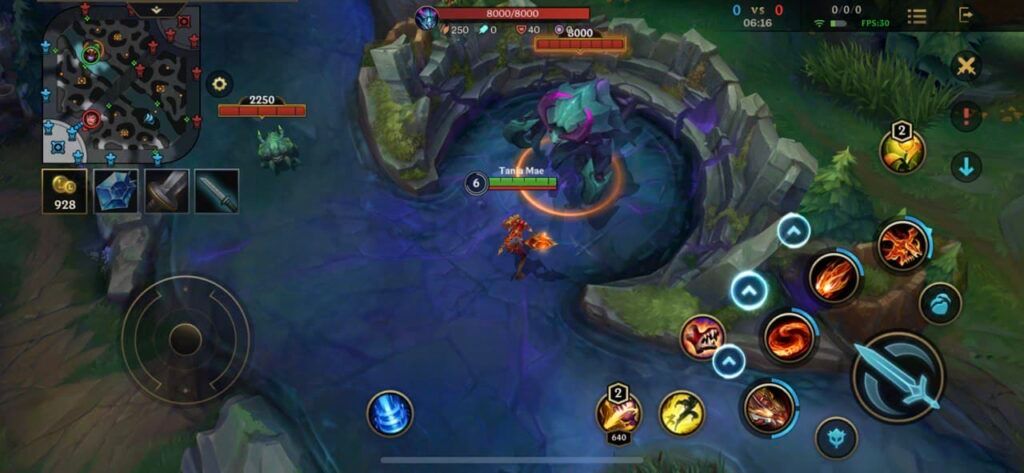
The purpose of Herald is to speed up the process of downing towers. The player with the eye in their pocket can move towards a lane of their choosing to summon Herald. Once near a turret, it will charge into it for burst damage, and lose a chunk of HP. Thanks, buddy!
Baron Nashor
Spawning at 10:00 is the most epic monster of all, Baron. Once slain by a team, it gives a buff to all players who are alive. When a champion with Baron buff is near a minion wave, it buffs up your friends, allowing them to dish out more damage against the enemy’s opposing wave.
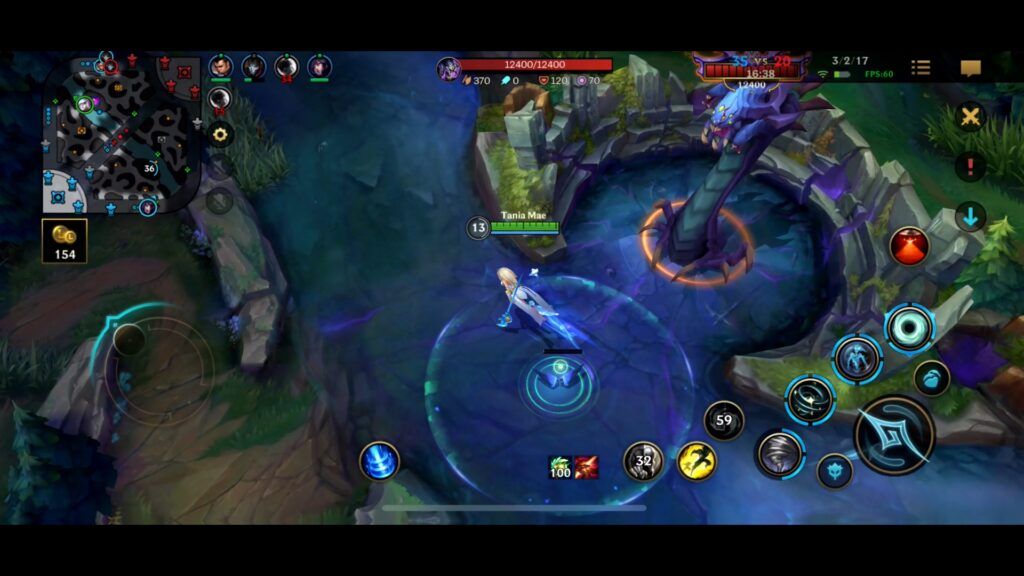
Overall, Baron buff gives the team that secures it pushing power. Standing side by side with their minions, they can then pressure and down enemy turrets across lanes as they push into the enemy base.
With the Baron buff, champions will also recall faster than usual, speeding up the gameplay. Once Baron is slain, it will respawn in three minutes, giving both teams another chance to slay and reap its benefits. This is why Baron is crucial in the late game, for its buff can turn the tides even for a team on the backfoot.
Wild Rift champions, positions, and roles
Types of damage
To understand the different roles, first you need to be aware of the two main types of damage in-game.
Ability Power (AP) amplifies magic damage, and is the preferred choice of mages, most supports, and some assassins.
Attack Damage (AD) deals physical damage, and is the premiere choice for marksmen, melee fighters, and some assassins.
Smite, or certain Champion abilities like Vayne’s Silver Bolts, deal True Damage, that is, damage that will not be reduced by armor. They deal a fixed amount, always.
Positions
Since there are five positions in the game, you can choose one of five unique roles to play. The top or Baron lane usually comprise of a melee fighter such as Darius, Garen, and Fiora. The mid lane, the shortest lane on the map, is home to mages and assassins like Zed, Yasuo, and Ziggs.
The duo or Dragon lane, consists of a ranged marksman and a support. Marksmen are the highest dealers of damage in a game, but also the most vulnerable, so having a trusty support by their side is essential. Since dragon gives permanent stats, having two champions nearest to the pit increase the chances of securing it.
Lastly, there’s the jungle position, which is usually occupied by another melee fighter like Olaf, melee assassins like Master Yi, or AP based Gragas and Evelynn.
Roles
Notice we used the word ‘position’ to describe their location and preferred place on the map. This distinguishes it from roles, which relates to team composition.
There may be 5 positions, but there are six roles: Assassins, fighters, mages, marksmen, supports, and tanks. Assassins deal burst damage, and have their eyes on champions with the least health. Fighters buy items that give them a mix of damage and defenses, for they like to brawl up close and personal. Mages are wizards, who are spell casters, and therefore mana reliant. They deal magic damage over large areas.
Marksmen are long ranged champions that deal the most consistent damage in the game the more items they possess. The trade off? They tend not to build defensive items, which is why they have supports to help them out. These champions have the ability to peel, that is, keep enemy champions at a distance while their marksman repositions, or engage. Lastly, tanks are your beefy front liners with lots of health and defensive stats, there to soak up damage from the enemy.
Not every team composition requires assassins, for example, but they will benefit from having a mixed damage line up comprising of both AP and AD champions, tanks for frontline and engage, and supports who can peel and protect their marksmen.
These roles may overlap each other, where Alistar is a support who can engage, and is also a tank in the Dragon lane. Seraphine is a mage, and can be played as support.
Summoner Spells and Runes
The phase before the game, whether in ranked or normals, is called Champion Select (CS). Here, you’ll get to choose three things: Pick your champion, slip into a position, and adjust your runes and Summoner Spells.
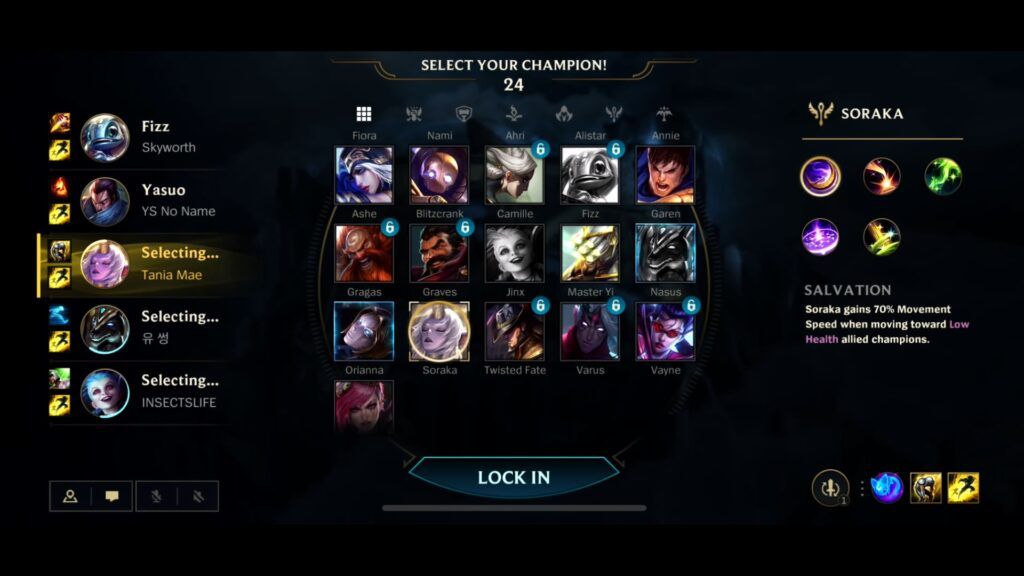
Every player has access to two Summoner Spells (SS), which are located at the bottom right hand corner of your screen in CS. Soraka for instance, has Exhaust and Flash, while for runes, her Keystone is Aery. In Wild Rift, these will be chosen automatically for all players based on what’s optimal for their chosen champion.
Unless you create tailored rune sets, or swap out your summon spell during CS, even if you forget or can’t decide, at the very least you’ll have something when you go in-game. Flash is the most common SS, for it allows champions to teleport a short distance in the direction of their choosing, perfect for closing the gap to finish off the kill, or escape treacherous situations.
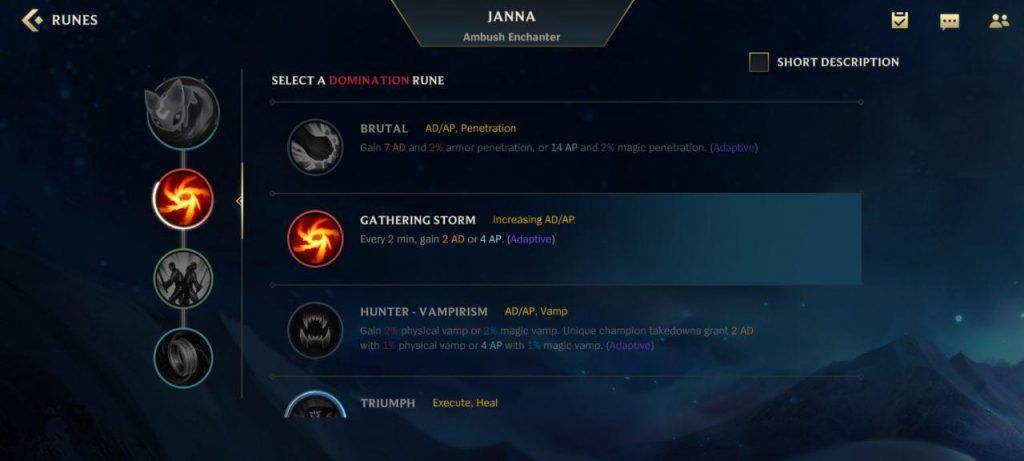
Basic Wild Rift mechanics
Targeting
In order to select specific targets, you’ll need to drag your auto attack or ability icon out. When you do so, a thin yellow line with a target in the center appears on the map.
As you’ll learn in the tutorial, all you need to do is drag it near or over a unit in order to target it.
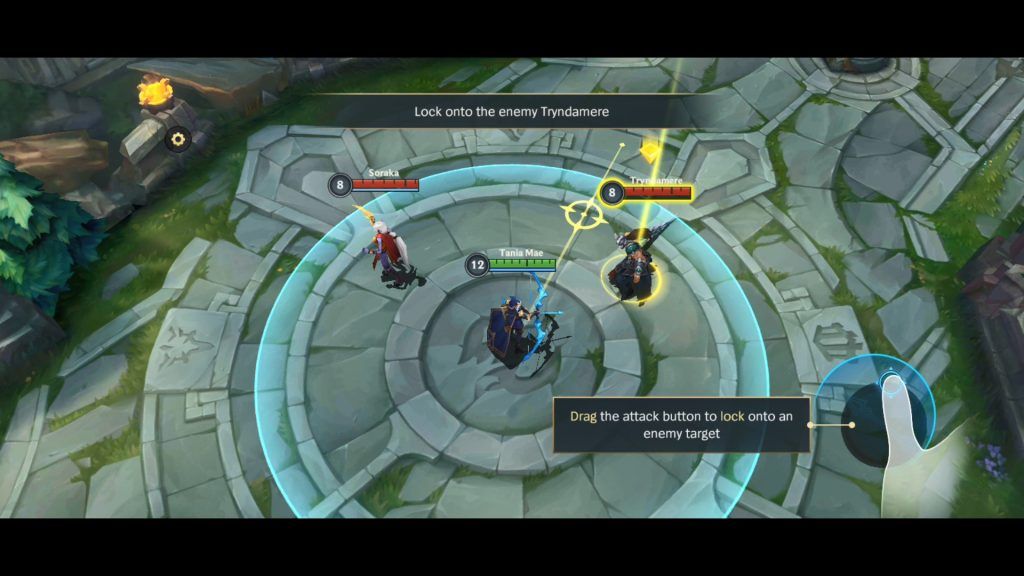
Last hit
Even though champions do get gold passively, it’s too slow, and not enough to allow you to buy the items you need to push through for victory. Hence, junglers clear camps, while laners kill minions for a steady income. In order to actually receive the gold from a mob, you must last hit it.
This means that just before each minion’s HP goes to zero, you’ll need to hit it to be responsible for it going to zero. For example, if a minion is left with 79 but your auto attack did 33, and at the same time it is being attacked by your own minions and it dies, you will not get gold from it. You’ll need to watch the rate of its HP decreasing in relation to how many of your minions are ganging up on it, and time your spell or auto attack such that you guarantee the last hit for yourself.
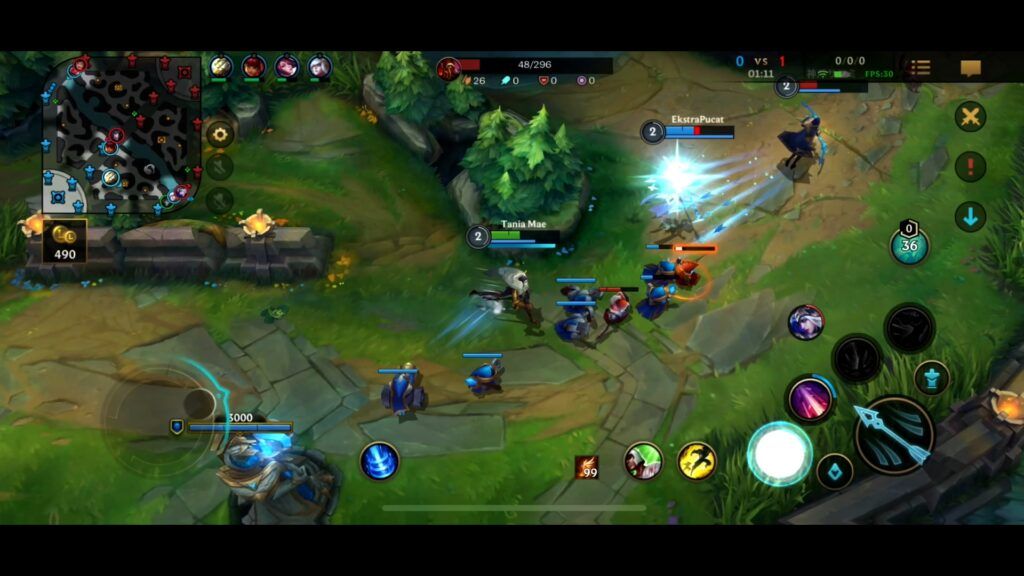
Luckily in Wild Rift, there’s an indicator to help you out. once a minion is low enough to last hit, its HP bar will turn from red to white, as seen in the screenshot above. That’s when you know it’s ripe for the picking.
Other monsters however, do not have the same indicator. If your team started on the objective, enemy champions, especially the jungler with Smite, all have a chance to last hit the objective, with the possibility of stealing it right under your nose.
Skillshots
Not every skill is targeted. Majority of the abilities of champions in Wild Rift need to be targeted and aimed in a certain direction, angle, and timed such that they hit. This is called a skillshot, for you do need a certain level of skill in order to ensure they land where you want them to.
Nami’s first ability, Aqua Prison, and ultimate ability for example, are skillshots. If you press Tidal Wave, it’ll automatically be programmed to be released in a certain direction to help beginners along, but may not be as precise as you want.
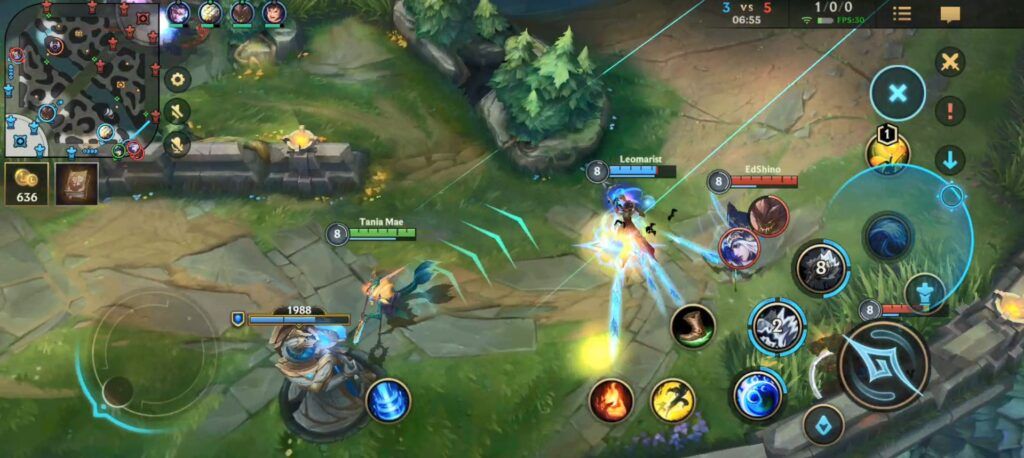
To direct your skillshot, drag the ability out. This reveals a circle around it that controls its direction. Simultaneously, on the map itself, you can see the outline of Nami’s Tidal Wave, which helps you aim better.
In contrast, casting Ebb and Flow and Tidercaller’s Blessing will automatically self-cast. At most, you’ll be able to target these onto allies or enemy champions since they are by nature, not skillshots.
Ability combos
This brings us to the next point — ability combos. All champions in Wild Rift have four abilities, which can be casted at different times to form different combinations. If you do not use the right combination at the right time, your output damage and effectiveness will not be maximized.
Support and mage champion Seraphine’s ultimate, Encore, is a big spell that covers a large area. When she catches multiple enemies with it, they are charmed — a cue for her teammates to follow up. Since it is a high initiation spell, it’s usually used at the start of a fight.
Her third ability, Beat Drop, when casted twice thanks to her passive, Stage Presence, roots enemies. This makes it perfect for her to combo and chain these two spells together, for once the enemies are charmed, they are then rooted and immobilized longer.
Since every single champion is unique, you’ll need time to learn what their combos are, and practice executing them. For beginners, it’s important to get used to mechanics and combos, so stick to easy to use champions first before progressing to more complex ones.
Getting the flow of a Wild Rift game
Once you enter the game, you begin the laning phase. The solo laners will go into their respective lanes, the duo inhabits Dragon lane, and the jungler begins the clearing of camps.
All champions must segue into this standard formation in order to gain experience points to level up, and earn gold to buy items, both of which strengthen their stats. If you manage to outplay your opposing laner or jungler, great. Take the kill, reap the gold, soak up that XP, and continue to assert lane dominance. However, remember to watch out for ganks!

In between, depending which lane you’re in, your jungler might need assistance in securing Dragon or Herald. Once you push in your wave, that’s a good time to look for opportunities to help your team by warding or lending a hand. This is where skirmishes or fights could break out in the river as more members group up to help each other out.
Typically once the first turret is down, the game transits to mid game. In this phase, the duo rotates to either mid or top, and focuses on downing the next outer tower since the marksman is the most suited for downing these structures.
The moment Elder Dragon and Baron spawns, it’s officially late game. Since there are no fixed lane assignments, this is where strategy comes in. There are optimal places as to where and when champions should be on the map in relation to minion waves and more. Nonetheless, when these are two big objectives on the map, teams will choose to fight for them, so expect lots of contest, bloodshed, and clutch steals.
See you on Wild Rift!
READ MORE: Wild Rift beginner’s guide: Everything you need to know about the client
